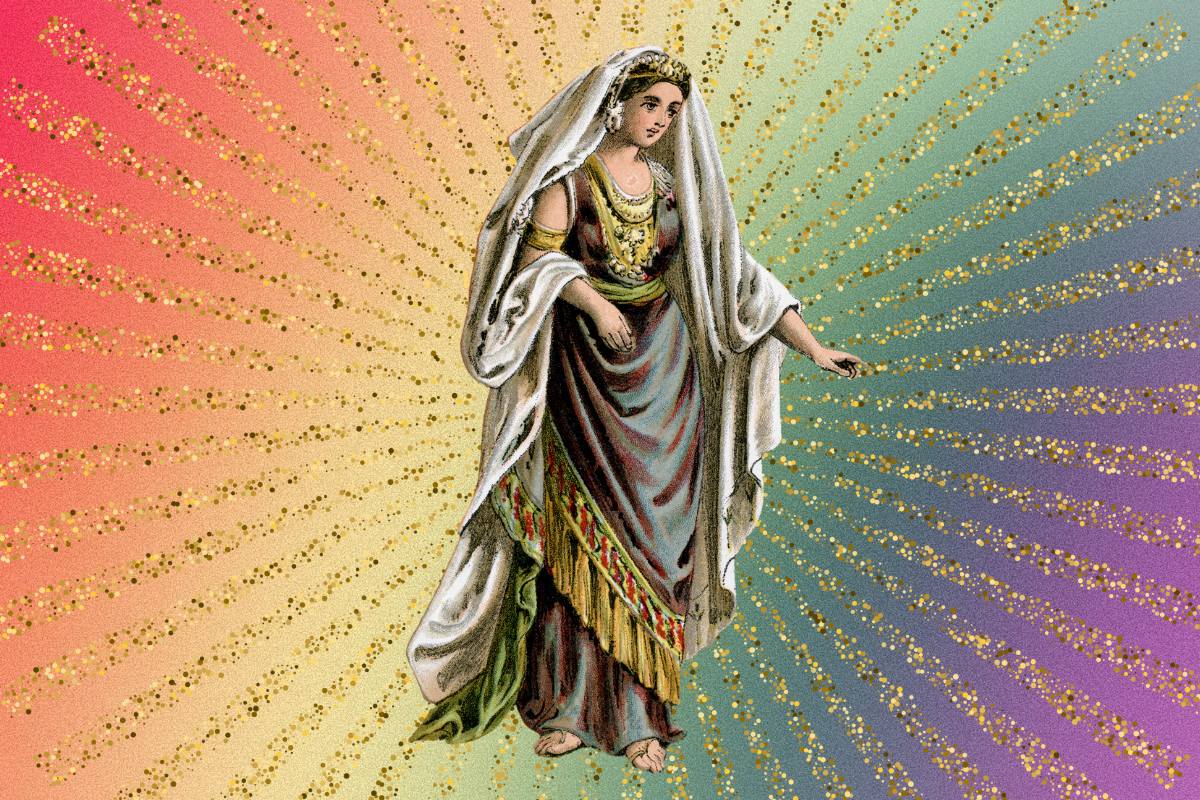I’m here today to tell you that Queen Esther is a gay icon.
What exactly qualifies someone to be a gay icon? Great question. There isn’t a 100% clear definition that every single gay person agrees with, but I think drag legend and playwright Charles Busch, while describing what made Judy Garland a gay icon, framed it best. He said what connected her to the LGBTQ+ community was not her tragic nature, but rather her ability to “dredge up joy.” I think what Busch meant by this is that despite Judy’s downs in life, she was able to stay up — to fight through troubles with beauty and strength.
If we are using this definition to decide what makes a queer icon, then Queen Esther is it.
Queen Esther is the main character and hero in the story of Purim, recounted in the Book of Esther. You’re probably familiar with the tale, but let’s do a quick recap.
The Purim story begins in Persia, where we meet King Ahasuerus right as he dethrones his wife, Queen Vashti. When the king seeks a new queen, it’s Esther who wins the beauty contest and wins the honor — while keeping her Judaism a secret. Esther comes from humble beginnings and was raised by her uncle, Mordechai. Once she becomes queen, she’s the most powerful woman in the land and the king is enthralled with her. But all is not well; her uncle Mordechai refuses to bow before Haman, the king’s top advisor, prompting Haman to destroy the Jews. King Ahasuerus is not too clever, and goes along with Haman’s plan, not knowing his new queen is also Jewish. Mordechai asks Esther to step in and save her people, and though she’s scared, she steps up. Esther hosts a banquet and tells the king to bring Haman with him. At the banquet’s peak, she reveals Haman’s plan and her Jewish identity, pleading with the king on behalf of her people. The king sentences Haman to death; Esther saves the Jews of Persia.
The story of Purim has a lot of queer undertones. On a surface level, Purim is like Jewish Halloween, with everyone dressing in costume and just being gay and merry.
The other layer of queerness that I want to address is the portrait of Esther.
Esther is described as a beauty that cannot be compared. Becoming queen made her a glamorous beauty, an important factor for many gay icons.
She overcame a difficult childhood, poverty and discrimination. Raised by her Uncle Mordechai, she wasn’t born into the lavish life of the kingdom, and in some versions of the story seems quite reluctant to accept her queenly position. This reminds me of what Charles Busch was talking about when referencing Judy Garland — Esther certainly had her downs.
There is something also operatic — and dare I say soap-opera-esque — about the way Esther and Mordechai planned to take Haman down. Esther knew there was evil afoot but instead of doing something about Haman’s plan immediately, she carefully arranged to take down the villainous mastermind (if you’ll go on this soap-opera journey with me) at a costume banquet and called him out in front of everyone. Just typing that sentence makes me think Andy Cohen would have paid the big bucks to have Bravo cameras filming this. There were surely other ways Esther could have taken Haman down and saved her people, but she chose to do so with a veil of glam and pomp and circumstance.
Queen Esther is a real baddie and a half. She cared, she fought, she conquered — and she never smeared her lipstick. Esther is sometimes not thought of as the hero of Purim because it was Mordechai who informed her of Haman’s plans, but in my book Esther is the real hero because she risked her life to save her people. Her beauty and glamor is just the cherry on top of her sundae built on courage and strength.
Iconic.



